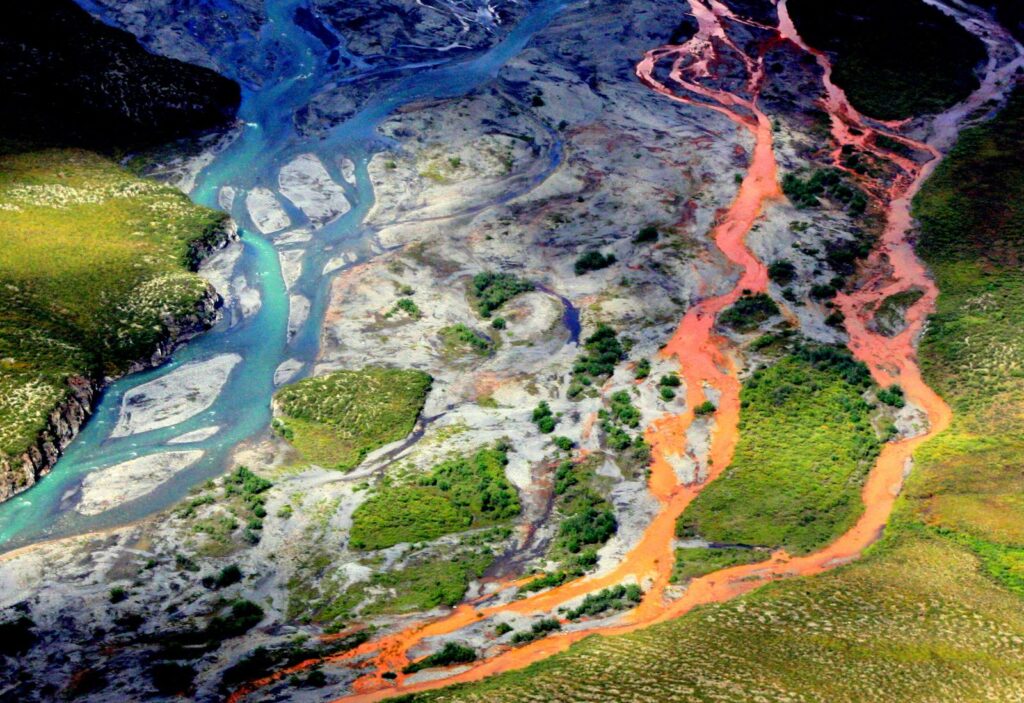Alaska Waterways Discoloring due to Thawing Permafrost, Study Finds
Rivers and streams in Alaska are shifting from blue to orange due to toxic metals released by thawing permafrost, a new study has shown.
Investigators from the National Park Service, University of California at Davis, and the US Geological Survey were startled by this discovery. The researchers noted that the waterways in Alaska’s Brooks Range had turned rusty and murky over the past decade. They confirmed these observations in a study published in Communications: Earth & Environment.
The researchers identified toxic metals such as iron, zinc, copper, nickel, and lead as the cause of the discoloration. These metals, which are harmful to river and stream ecosystems, are being released as the permafrost melts, exposing the waterways to minerals that have been underground for centuries.
Brett Poulin, a study co-author and professor of environmental toxicology at UC Davis, said, “This is a classic process that happens in rivers here in the continental US that have been impacted for over 100 years since some of the mining rushes in the 1850s. It’s very startling to see it when you’re in some of the most remote wilderness.”
Arctic Soils and Warming Climate
The study notes that organic carbon, nutrients, and metals such as mercury are naturally contained within the permafrost of Arctic soils. High temperatures have caused these minerals to mix with surrounding water sources as the permafrost melts.
Significantly, the Arctic is warming at a rate four times faster than the rest of the world, as studies have indicated. Poulin remarked, “What we believe we’re seeing is this thawing of soil that’s happening faster there than it would happen elsewhere. It’s really an unexpected consequence of climate change.”
Impact on Aquatic Life
The discoloration of these rivers has resulted in “dramatic declines” in aquatic life. This raises concerns about the future impact of continued permafrost melting on communities relying on these waterways for drinking and fishing.
Many fish critical for subsistence, sport, and commercial fisheries live in Alaska’s Arctic rivers, according to the researchers. Local communities began reporting their observations and concerns to the researchers approximately seven years ago.
Similar Impact in Other Regions
Alaska isn’t the only region undergoing this change. Similar effects have been observed in Colorado’s Rocky Mountains due to climatic warming, among other factors. Another study published by Water Resources Research reports increased concentrations of metals, such as sulfate, zinc, and copper, in 22 mountain streams in Colorado over the past 30 years.
Research on rising metal and rare earth element concentrations in mountain rivers and streams has been conducted in the Chilean Andes, the European Alps, and the Pyrenees in northern Spain.
While some of these regions have been exposed to mining sites, thus witnessing metal concentrations in their rivers and streams for years, the increased levels raise questions about the future climate change impacts on mountain water sources.
Research in Alaska will proceed in the next few years to establish the origin of the metal and mineral sources, and how they will affect aquatic and human life.
Original Story at www.cnn.com
